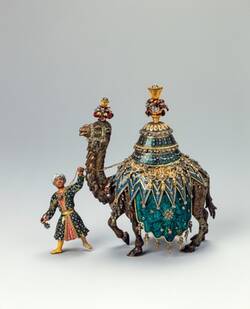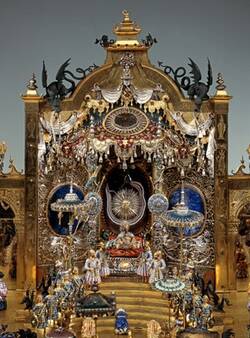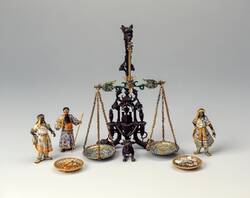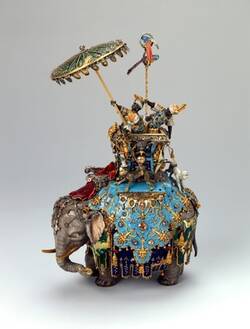It is the birthday of the Grand Moghul Aurangzeb, the absolute ruler of India. Princes and powerful officials of his vast empire flock to Delhi to pay tribute to the awe-inspiring potentate. After all, they want to secure their own positions.
The Grand Moghul is seated on a red cushion in front of his throne. Apparently unmoved, he gazes at the spectacle performed in his honour. Opposite him – at the other end of the stage – there are large scales. Each year, on his birthday, the Grand Moghul was weighed. It was the highpoint of the five-day celebrations.
Aurangzeb was a contemporary of August the Strong. His father was the great ruler who built the Taj Mahal. Aurangzeb ruled India from 1658 until his death at the age of eighty-eight, in 1707. He held a world monopoly on diamonds and had his own goldmines. With the riches of India at his disposal – spices, silk, tea and ivory – he was viewed by European rulers as the quintessential oriental potentate. He seemed to embody absolute power and infinite wealth.
With the Baroque jeweller’s love of detail, Dinglinger has filled this scene – which is nearly a square-metre in size and stretches over three courtyards – with a huge variety of figures and objects to delight the eye and capture the imagination of the viewer. No fewer than one hundred and thirty-two characters are performing on the stage, which is made of silver and silver-gilt. They present the Grand Moghul with thirty-two gifts – including a white elephant, a sun pyramid, a large vase, a treasure chest and a coffee service. For this stupendous work, Dinglinger used over five thousand diamonds, rubies, emeralds and other gems. Over the years, about four hundred of them have gone missing. All the figures can be moved freely and arranged as one pleases. That means they can be used to make varying statements. However, we have a good idea of how they were originally arranged – from a description by Dinglinger himself and an engraving from 1739.
The Throne of the Grand Moghul Aurangzeb is a major work of European Baroque jewellery-making. Designed by Johann Melchior Dinglinger, it was executed with the help of his two brothers. They worked on it for seven years – without any guarantee that they would sell it. Dinglinger’s image of the Orient was derived from contemporary traveller’s tales about China and India, as well as more scientific accounts. In a number of aspects, his version of the birthday celebrations corresponds exactly to travellers’ reports.
August the Strong purchased this unique object in 1709 for the astronomical sum of sixty thousand Thalers. Dinglinger also delivered an essay summarising the current state of European research into far-away India.
Further Media
- Location & Dating
- Dresden, 1701 - 1708 / Table: 1721 - 1723
- Material & Technique
- Wooden core, gold, silver, partially gilt, enamel, precious stones, pearls, lacquer painting, table: wood, gilt
- Dimenions
- H 58 cm, B 142 cm, T 114 cm; historischer Tisch: H 89,8 cm, B 148 cm, T 119,5 cm
- Museum
- Grünes Gewölbe
- Inventory number
- VIII 204



